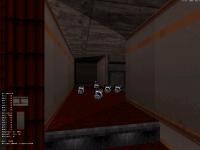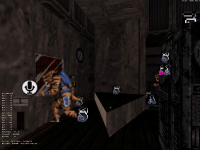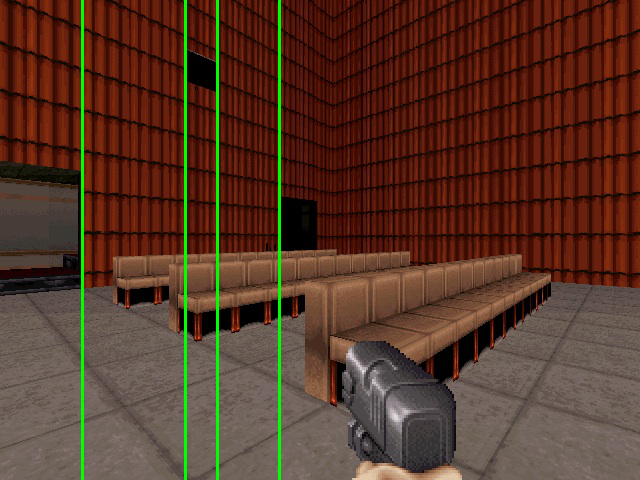 Wolfyboy, on 08 November 2016 - 05:22 PM, said:
Wolfyboy, on 08 November 2016 - 05:22 PM, said:
As far as I could tell from the research I've done, the engine couldn't do room over room techniques yet, so it's kind of mystifying to me how they got around it without it conflicting with the small hallway that runs underneath.
The only thing I can think of is that they used some sort of fancy way of teleporting the player around...
"Teleporting" is a common misconception I hear all the time about Build. I think it comes from the fact that some places, like the rooftop at the start of E1L1 or some types of elevator, do teleport the player to another area; however these are a complete different thing altogether and people tend to make a generality out of it.
Basically, I think due to the way it renders the world, Build can have as many sectors as you want on the same X/Y placement (Z level doesn't matter), as long as the player isn't able to see two overlapping sectors at the same time (to be precise: you
can build two overallapping areas even if the player sees two overlapping sector, but there will be a visual glitch preventing him from seeing one of the two).
This is why the corridor in the theater has entrances on the sides, and not directly beneath the window; and why like Jimmy and Hank explained, they cut down that corridor into several sectors so that the parts of the corridor that you can see while also being able to see the window, are not sectors which overlap directly with the ones the window let you see.
Check maps like E2L11 Spin Cycle or usermap DM_Ducts, and you'll get a better understanding of how it works, and of the possibilities it allow.
You can also check E3L4 L.A. Rumble as a good example of another use of this: the building opened by the blue keycard, you can enter near the blue lock, but you can also go on the rooftop directly 'above' the inside room. That is done by exploiting white walls, and couldn't be done with red ones. Redneck Rampage games have ton of even smarter uses like that.
It's also worth noting that Room over Room doesn't always completely replace this. Quite often in Blood or SW, Room Over Room, which are 'just' view portals, like a mirror but giving you view to another area, is mixed with this feature just described above to further mimick the feel of true 3D. For instance in many cases, the two floors really are there 'on top of each others' (sharing the same X/Y coordinates like in E1L1) and RoR portals are a trick used to let the player see both areas at the same time and teleport him if he goes through the portal.
In other words, in those cases, the only difference with E1L1 theater, is that RoR allows to connect areas both in the way E1L1 does like you naturally could, and also through view portals. I'm pretty sure it's the case in Blood's E1M1 for instance, when you destroy the front wall of the funeral home.
Not every case of RoR in those games are like this (in many cases, the RoR area is only connected through a teleporting view portal, like all the RoR pieces of Redneck Rampage: Rides Again), but those which make use of both means at the same time make for good examples on how to understand both things.
I haven't dived into EDuke32's TRoR though, but I think it works differently.


 Help
Help
 Duke4.net
Duke4.net DNF #1
DNF #1 Duke 3D #1
Duke 3D #1















